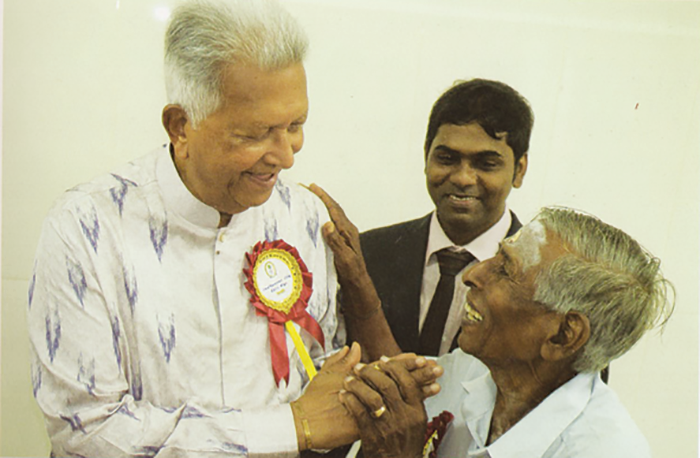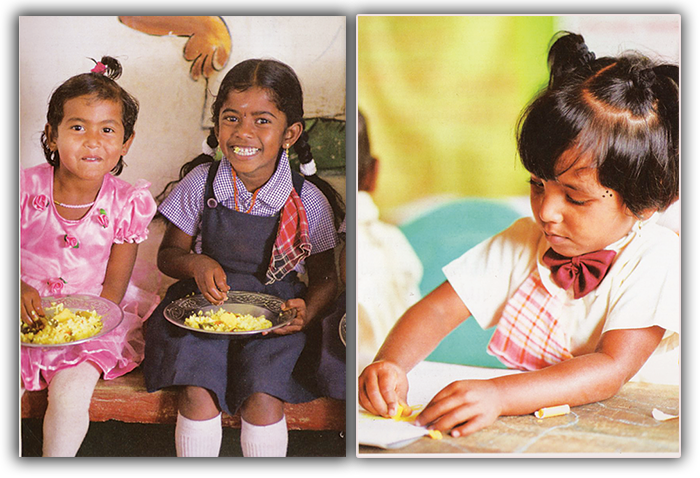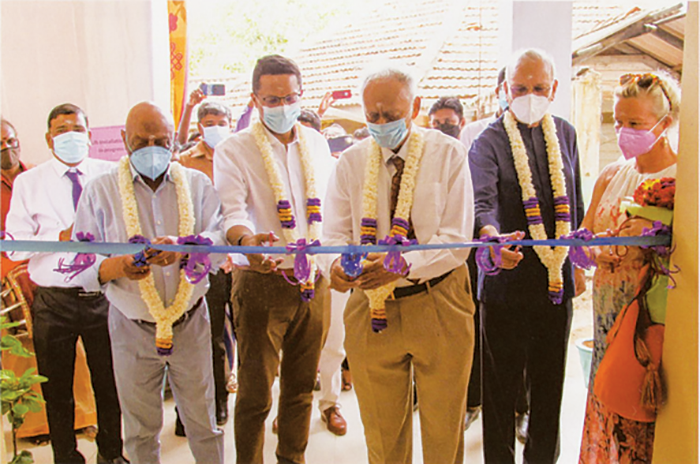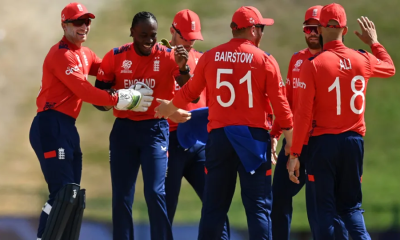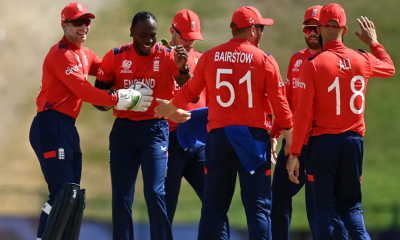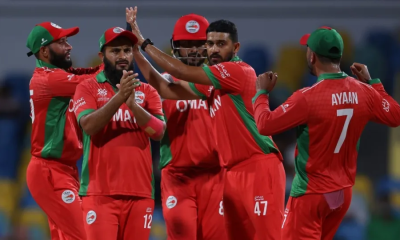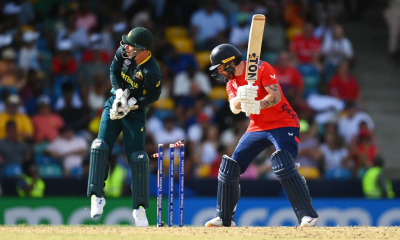Features
EDUCATION IN THE PLANTATION SECTOR
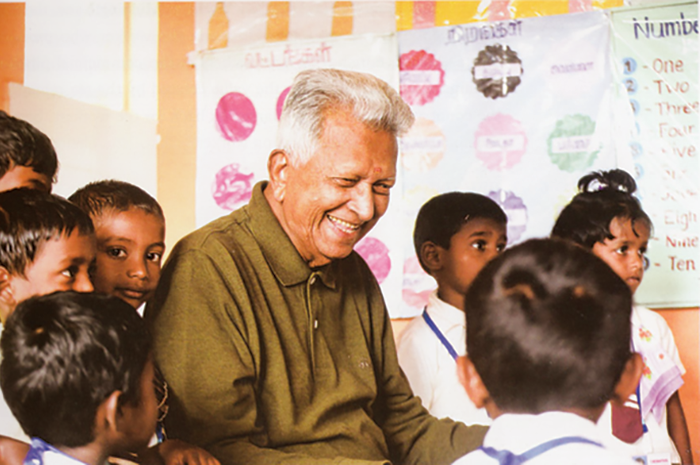
(Excerpted from the autobiography of Merrill J. Fernando)
Apart from livelihoods, post-tsunami, children’s education was one of the most deeply-affected dimensions. Our team established pre-schools for children in the affected areas and supplied teachers, specially trained by the Foundation not only to educate but also to handle emotional and physical trauma, resulting from the tsunami experience.
The outcomes of the educational assistance initiatives are probably most visible in the plantation sector, across three Regional Plantation Companies, benefiting several thousand children in terms of learning, equipment, accessories, and other facilities and, equally importantly, nutrition. At a higher level, bright students have been provided scholarships to enable them to pursue university education. This initiative has already produced two medical doctors and two lawyers, whilst there are five such students currently reading for their medical degrees in the medical faculties of the Jaffna, Rajarata, and Peradeniya Universities. The present judge in the Magistrate’s Court of Jaffna is also a direct beneficiary of the plantation residents’ scholarship programme.
The inadequacies of education in plantation areas are not visible to the mainstream because of the insular nature of the plantation society. Most plantation youth, male and female, because of overcrowded housing, a reluctance to engage in the traditional manual work of their parents, the desire for easy money, and the real need for augmenting family income, drop out very early from educational systems and seek employment outside.
However, due to lack of marketable skills and the minimalistic level of formal education, these youth are relegated to employment mostly below the blue collar level, condemning them and their progeny to the same vicious cycle of marginalization. Without assistance from specially-designed schemes, providing plantation youth access to higher education, the plantation sector will remain, well into the foreseeable future, a source of unskilled, low-paid labour, for the benefit of the more affluent external society.
The sweat and toil of our plantation workers, for over a century, have helped create billionaires in the other countries, in Europe and elsewhere, and in our country as well. I was first exposed to this culture of exploitation on my first visit to England, more than six decades ago when I underwent training as a Tea Taster at Mincing Lane, then the global centre of the tea trade. However, the worker who produces the tea, which enriches so many others in the commercial pipeline, remains marginalized. Unless the value created by the tea remains in the country and a surplus is channeled back for the workers’ benefit, as Dilmah is doing, the plantation worker’s lot will not change.
Personal experience
When I visited the tsunami-hit areas of the south, I saw for myself the impact of the devastation. I met children who had lost parents and siblings, and parents who had lost their children. People had lost homes and livelihoods. Some of these children had been so traumatized by their experiences, that they would not communicate or interact with society, in their silence and mute withdrawal, finding a measure of solace for an inexplicable tragedy.
Those who could muster the will to talk related the most harrowing tales of personal loss and deprivation. Listening to individual stories of such tragedies I felt so distressed that I could not even imagine how devastating it would have been to the individual who was telling me the story.
On one of his visits to the north, two doctors serving in the region had met Dilhan and requested him to build a new wing for the Accident Ward of the Kayts Hospital. I was not confident of the benefits of this kind of initiative, largely because of a disappointing experience previously with the Maharagama Cancer Hospital. The Foundation donated to the hospital a mammogram machine, which was idle for months after installation as the hospital did not provide X-ray film. However, Dilhan ascertained that the doctors who approached him were genuine and, about a year later, we completed construction of the new wing.
I attended the opening with my friend Ravi Thambiayah. After the ceremony, people of the area came and thanked me personally, assuring me that the new wing would actually save lives, which otherwise would be lost. Their gratitude was overwhelming. Such was their appreciation that they perceived me as an emissary of the gods they worshiped.
Apparently, in that area, people struck down by sudden and serious illnesses, snake-bites, and those injured in accidents, normally had to travel to the Jaffna Hospital, 16 km away and because of the inadequacy of transport facilities, two hours’ travel time away at best. With the new wing, such patients would be attended to within minutes. I was told that over 40,000 people were dependent on that hospital.
It takes little to enrich the lives of simple people, to whom the fulfillment of a basic need is an unexpected luxury. The Kayts experience encouraged me to extend the Foundation’s assistance in the north, and the next result was the construction of a new, three-storey, 90-bed ward block for the Point Pedro General Hospital, opened for operations in February 2021.
The existing ward buildings were over a century old and dilapidated, severely limiting the services the hospital could offer to over 150,000 people who depended on it. This initiative was co-sponsored, by the Ian and Barbara Karan Foundation for Youth Development. In fact, it was declared open on my behalf by Ian and his wife Barbara, in association with K. Ravindran and Rajan Asirwatham, both Trustees of the MJF Charitable Foundation, and my son Dilhan.
Symbolically, Ian Karan, my dear friend of many years, had been born in the very same hospital in 1939! Orphaned at a young age, he received his early education at Hartley College, Point Pedro. Thereafter, he entered the London School of Economics. Subsequently securing employment in a shipping company in Hamburg, in 1975 he set up a shipping company of his own.
Selling off that business in 1996, he established a container leasing company which, by the time he sold it a few years later, had become one of the largest such enterprises in the world. His foundation supports youth development, particularly in Sri Lanka, through the nationwide promotion of charitable initiatives, institutions, and projects. Like me, Ian is also a man of simple origins and strong in faith, who later became a successful entrepreneur. He too subscribes to the principle of the entrepreneur’s responsibility towards social justice.
Ian, Barbara, and his children became great friends with my family as well. All my visits to Hamburg included meetings with Ian and his family; knowing my fondness for opera and other performing arts, Ian and Barbara would ensure that my visits to them were enlivened by attendance at the Hamburg State Opera, for which they would very kindly get tickets for me.
The world of children – the dark side
I am haunted by the recurrent image of little children born with serious disabilities, undergoing rehabilitation and therapy, at both the Moratuwa and Kalkudah Centres. As a man with an abiding faith in a merciful God, the afflictions of such children is to me an inexplicable tragedy. Dilhan has always warned me against showing outward demonstrations of my distress on my visits to them, as that could upset the parents. However, I am also deeply grateful to providence that I have been able to contribute in some measure to make such lives more comfortable.
Children with congenital impairments are a heart-break for the concerned families. Down syndrome, cerebral palsy, and autism are conditions, which affected children and their families are compelled to live with till the end as there is no cure. Such children are marginalized and isolated, both by society and often by their own families. Both our Moratuwa and the East Centres provide for the care and training of disadvantaged children, as well as their family members, who need to be educated in the management and care of affected children. These programmes relieve parents from much of the pressure of caring for such children.
The stigmatization that such children are subject to by mainstream society, was brought home to me in a most unpleasant development soon after the commencement of the operations of the Ambagahawatte Centre, which specializes in the rehabilitation of children with cerebral palsy and other developmental disorders.
Families in the immediate neighbourhood protested at its purpose and activities, as they considered the housing of such disadvantaged children so close to their homes as potential for bad luck for themselves! Such superstitious and insensitive attitudes prevalent in mainstream society strongly reinforce the need for special initiatives to assist the disabled and to empower their families as well.
These children are also trained, educated, and stimulated by well-trained and caring staff to create art and, in various other ways, such as dance and theatre, to express themselves. Our annual MJF Centre ‘Celebrating Differences’ event, has become an ideal platform for the self-expression of these children, under normal circumstances condemned to lives of loneliness and an absence of recognition.
The performances that these differently-abled children produce year after year, with such self-confidence despite impediments to speech, movement, and cognition, are inspirational and deeply moving. What’s on display is not just child theatre, but, also, the power of love and caring. I witness this event every year and each time I am moved to tears.
Nipuna, one such child who has been with the Moratuwa Centre for several years, has become a child artist and improved his interpersonal skills to such an extent that we were able to place him in charge of a little restaurant we opened. Despite the inherent disadvantages of Down syndrome, he has developed to a stage where he considers himself an entrepreneur. He has told me very confidently that he wants to be a chairman of a company.
The progress of our initiatives with disabled children are signposted by such small, hard-won victories, but which loom large in the lives of those so enabled. One of the greatest joys of my life is seeing the beautiful smiles of little children, reflecting their joy at the liberation from congenital impediments.
There are other heart-warming moments, such as on a visit to an orphanage that the Foundation supports, when a blind child grabs Dilhan’s hand, smells his palm, and says with a brilliant smile: “This must be Mr. Dilhan.” To me, a little episode like that justifies all the resources that Dilmah diverts to the Foundation.
My world view
In the unforgiving world of big business and corporate enterprise, amid the relentless and mercenary crusade to become better, bigger, and more profitable, it is very easy to lose sight of the very society which big business feeds on; a society which consists largely of small people, struggling daily to make ends meet. The slightest disruption to the equilibrium of the diverse forces which regulate that society, whether through natural calamity, man-made conflict, or ungovernable economic disorder, immediately affects small people; they are the very first casualties of any upheaval as, their condition makes them the most vulnerable of our society.
A business cannot engage in charity at the expense of profit but, by the same token, a business cannot ignore the inequalities and inequities of the world in which it operates. A business creates genuine and lasting shareholder value when, within the means of its operation, it addresses those issues in the external society.
`Fair Trade’ has become a catchy slogan and the labels which carry that mantra provide comfort to civic-minded customers, who believe that part of what they pay for the product will go back to the producer. In the business reality of my perception, the ‘Fair Trade’ of corporate jargon is little more than marketing strategy, leveraged to perpetuate the existing system of multinational exploitation. In that system, from what the consumer pays at the cashier’s counter, the supermarket, the packer, the distributor, the importer, and the broker each get their piece of the action. The producer and the farmer are left with the crumbs off the table.
The ‘Fair Trade’ slogan has been introduced to marketing-speak by the multinationals because, after decades of exploitation along the chain, they have been compelled to accept the fact their trade has been, essentially, always unfair! In the hands of most traders, ‘Fair Trade’ has become a tool to gain the sympathy and support of the consumer, without genuinely addressing the consequences of unfair trade.
Genuinely fair trade presupposes the empowerment of the producer, but in reality very little of the value goes back to the farmer. Trade becomes genuinely fair only when earnings surplus is deployed in the country of origin, outside the ambit of the business, in caring for and empowering the marginalized and the indigent.
The country which grows the product is the best location for ‘Fair Trade’. That is what Dilmah does. Every cup of Dilmah tea, wherever in the world it is drunk, brings a measure of happiness, comfort, and empowerment, to either an individual or a community in need back in the country where the Dilmah tea is grown.
The needs of the disadvantaged in our society are many. Governments, which are shackled by bureaucratic restrictions, can only do so much and because of the size of the problem, that is insufficient. I know that I am also making a small impact within the means enabled by my business. But my view is that if all entrepreneurs make whatever contribution possible, addressing genuine community inadequacies in a sustainable manner, the world will become a much better place for the disadvantaged and the marginalized. I stand by my view, that every business must have a greater purpose which lies beyond profit.
After I launched the Foundation and its work got going in an organized manner, Dilhan kept bringing me more and more projects for sponsorship. I agreed to help with whatever resources I can divert for the cause and, despite my initial misgivings regarding the sustainability of our philanthropy, somehow the means have always appeared. The Bible says that the charity that you do is a gift to God and God repays you in abundance. In this world there is no shortage of wealth, but there is a great inequity in its distribution. Those who possess the means must correct that imbalance and that correction can be achieved only by sharing.
The fruits of the success of Dilmah have been many. It has provided employment to thousands, both here and abroad; it has also enriched many. In the process, it has carried across the world the message of the value of Pure Ceylon Tea and established its image as a desirable product in over 100 countries. It has brought me fame, fortune, recognition, and accolades. However, in my mind, its most valuable outcome is the goodness that I, along with my family, have been able to create with the value created by Dilmah. That will be its most enduring legacy.
‘Business as a Matter of Human Service’ is a responsibility we all share and that which we must all contribute to. What I shared with 18 of my workers six decades ago has, through the efforts of the many people who accompanied me on my long journey, and with the grace of God, increased exponentially and today benefits thousands of less-fortunate individuals and their families. As my friend Leighton Smith of New Zealand has expressed so very simply in his book, ‘Leighton Smith, Beyond the Microphone: “Merrill is an admirable example of how what you put out comes back to you; in his case, in droves… “
We come into this world with nothing, we leave with nothing. The wealth that some of us acquire is owed to the efforts and cooperation of many others around us. Let us, therefore, share that wealth while we are still around, so that the goodwill and contentment created thereby may make our world a happier place for others too.
Features
The Great and Little Traditions and Sri Lankan Historiography
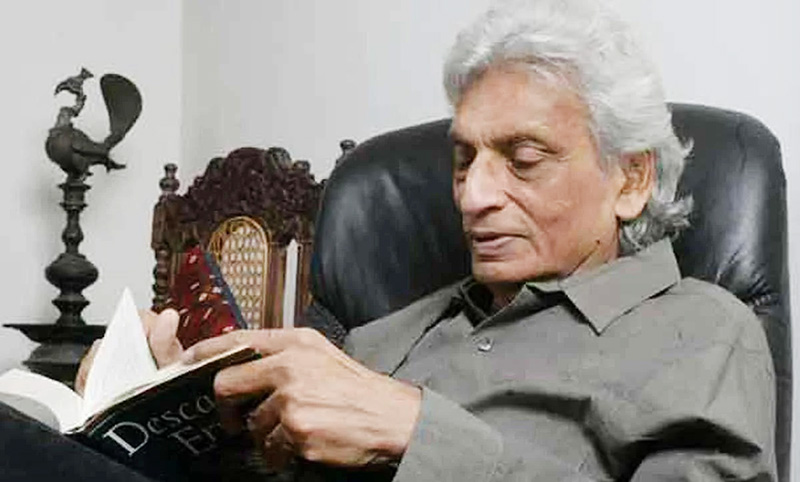
Power, Culture, and Historical Memory:
History, broadly defined, is the study of the past. It is a crucial component of the production and reproduction of culture. Studying every past event is neither feasible nor useful. Therefore, it is necessary to be selective about what to study from the countless events in the past. Deciding what to study, what to ignore, how to study, and how deeply to go into the past is a conscious choices shaped by various forms of power and authority. If studying the past is a main element of the production and reproduction of culture and History is its product, can a socially and culturally divided society truly have a common/shared History? To what extent does ‘established’ or ‘authentic’ History reflect the experiences of those remained outside the political, economic, social, and cultural power structures? Do marginalized groups have their own histories, distinct from dominant narratives? If so, how do these histories relate to ‘established’ History? Historiography today cannot ignore these questions, as they challenge the very notion of truth in History. Due to methodological shifts driven by post-positivist critiques of previously accepted assumptions, the discipline of history—particularly historiography—has moved into a new epistemological terrain.
The post-structuralism and related philosophical discourses have necessitated a critical reexamination of the established epistemological core of various social science disciplines, including history. This intellectual shift has led to a blurring of traditional disciplinary boundaries among the social sciences and the humanities. Consequently, concepts, theories, and heuristic frames developed in one discipline are increasingly being incorporated into others, fostering a process of cross-fertilization that enriches and transforms scholarly inquiry
In recent decades, the discipline of History has broadened its scope and methodologies through interactions with perspectives from the Social Sciences and Humanities. Among the many analytical tools adopted from other disciplines, the Great Tradition and Little Tradition have had a significant impact on historical methodology. This article examines how these concepts, originally developed in social anthropology, have been integrated into Sri Lankan historiography and assesses their role in deepening our understanding of the past.
The heuristic construct of the Great and Little Traditions first emerged in the context of US Social Anthropology as a tool/framework for identifying and classifying cultures. In his seminal work Peasant society and culture: an anthropological approach to civilization, (1956), Robert Redfield introduced the idea of Great and Little Traditions to explain the dual structure of cultural expression in societies, particularly in peasant communities that exist within larger civilizations. His main arguments can be summarized as follows:
a) An agrarian society cannot exist as a fully autonomous entity; rather, it is just one dimension of the broader culture in which it is embedded. Therefore, studying an agrarian society in isolation from its surrounding cultural context is neither possible nor meaningful.
b) Agrarian society, when views in isolation, is a ‘half society’, representing a partial aspect/ one dimension of the broader civilization in which it exits. In that sense, agrarian civilization is a half civilization. To fully understand agrarian society—and by extension, agrarian civilization—it is essential to examine the other half that contribute to the whole.
c) Agrarian society was shaped by the interplay of two cultural traditions within a single framework: the Great Tradition and the Little Tradition. These traditions together provided the unity that defined the civilization embedded in agrarian society.
d) The social dimensions of these cultural traditions would be the Great Society and the Little Society.
e) The Great Culture encompasses the cultural framework of the Great Society, shaped by those who establish its norms. This group includes the educated elite, clergy, theologians, and literati, whose discourse is often regarded as erudite and whose language is considered classical.
f) The social groups excluded from the “Great Society”—referred to as the “Little Society”—have their own distinct traditions and culture. The “Great Tradition” represents those who appropriate society’s surplus production, and its cultural expressions reflect this dominance. In contrast, the “Little Tradition” belongs to those who generate surplus production. While the “Great Tradition” is inherently tied to power and authority, the “Little Tradition” is not directly connected to them.
g) According to Robert Redfield, the Great and Little Traditions are not contradictory but rather distinct cultural elements within a society. The cultural totality of peasant society encompasses both traditions. As Redfield describes, they are “two currents of thought and action, distinguishable, yet overflowing into and out of each other.” (Redfield, 1956).
At the time Redfield published his book Peasant Society and Culture: an Anthropological Approach to Civilization (1956), the dominant analytical framework for studying non-Western societies was modernization theory. This perspective, which gained prominence in the post-World War II era, was deeply influenced by the US geopolitical concerns. Modernization theory became a guiding paradigm shaping research agendas in anthropology, sociology, political science, and development studies in US institutions of higher learning,
Modernization theory viewed societies as existing along a continuum between “traditional” and “modern” stages, with Western industrialized nations positioned near the modern end. Scholars working within this framework argued that economic growth, technological advancement, urbanization, and the rationalization of social structures drive traditional societies toward modernization. The theory often emphasized Western-style education, democratic institutions, and capitalist economies as essential components of this transition.
While engaging with aspects of modernization theory, Redfield offered a more nuanced perspective on non-Western societies. His concept of the “folk-urban continuum” challenged rigid dichotomies between tradition and modernity, proposing that social change occurs through complex interactions between rural and urban ways of life rather than through the simple replacement of one by the other.
The concepts of the Great and Little Traditions gained prominence in Sri Lankan social science discourse through the works of Gananath Obeyesekere, the renowned sociologist who recently passed away. In his seminal research essay, The Great Tradition and the Little in the Perspective of Sinhalese Buddhism (Journal of Asian Studies, 22, 1963), Gananath Obeyesekere applied and adapted this framework to examine key aspects of Sinhalese Buddhism in Sri Lanka. While Robert Redfield originally developed the concept in the context of agrarian societies, Obeyesekere employed it specifically to analyze Sinhala Buddhist culture, highlighting significant distinctions between the two approaches.
He identifies a phenomenon called ‘Sinhala Buddhism’, which represents a unique fusion of religious and cultural traditions: the Great Tradition (Maha Sampradaya) and the Little Traditions (Chuula Sampradaya). To fully grasp the essence of Sinhala Buddhism, it is essential to understand both of these dimensions and their interplay within society.
The Great Tradition represents the formal, institutionalized aspect of Buddhism, centered on the Three Pitakas and other classical doctrinal texts and commentaries of Theravāda Buddhism. It embodies the orthodoxy of Sinhala Buddhism, emphasizing textual authority, philosophical depth, and ethical conduct. Alongside this exists another dimension of Sinhala Buddhism known as the Little (Chuula) Tradition. This tradition reflects the popular, localized, and ritualistic expressions of Buddhism practiced by laypeople. It encompasses folk beliefs, devotional practices (Bali, Thovil), deity veneration, astrology, and rituals (Hadi and Huunium) aimed at securing worldly benefits. Unlike the doctrinally rigid Great Tradition, the Little Tradition is fluid, adaptive, and shaped by indigenous customs, ancestral practices, and even elements of Hinduism. These Sinhala Buddhist cultural practices are identified as ‘Lay-Buddhism’. Gananath Obeyesekera’s concepts and perspectives on Buddhist culture and society contributed to fostering an active intellectual discourse in society. However, the discussion on the concept of Great and Little Traditions remained largely within the domain of social anthropology.
The scholarly discourse on the concepts of Great and Little Tradition gained new socio-political depth through the work of Newton Gunasinghe, a distinguished Sri Lankan sociologist. He applied these concepts to the study of culture and socio-economic structures in the Kandyan countryside, reframing them in terms of production relations. Through his extensive writings and public lectures, Gunasinghe reinterpreted the Great and Little Tradition framework to explore the interconnections between economy, society, and culture.
Blending conventional social anthropology approach with Marxist analyses of production relations and Gramscian perspectives on culture and politics, he offered a nuanced understanding of these dynamics. In the context of our discussion, his key insights on culture, society, and modes of production can be summarized as follows.
a. The social and economic relations of the central highlands under the Kandyan Kingdom, the immediate pre-colonial social and economic order, were his focus. His analysis did not cover to the hydraulic Civilization of Sri Lanka.
b. He explored the organic and dialectical relationship between culture, forces of production, and modes of production. Drawing on the concepts of Antonio Gramsci and Louis Althusser, he examined how culture, politics, and the economy interact, identifying the relationship between cultural formations and production relations
c. Newton Gunasinghe’s unique approach to the concepts of Great Culture and Little Culture lies in his connection of cultural formations to forces and relations of production. He argues that the relationship between a society’s structures and its superstructures is both dialectical and interpenetrative.
d. He observed that during the Kandyan period, the culture associated with the Little Tradition prevailed, rather than the culture linked to the Great Tradition.
e. The limitations of productive forces led to minimal surplus generation, with a significant portion allocated to defense. The constrained resources sustained only the Little Tradition. Consequently, the predominant cultural mode in the Kandyan Kingdom was, broadly speaking, the Little Tradition.
(To be continued)
by Gamini Keerawella
Features
Celebrating 25 Years of Excellence: The Silver Jubilee of SLIIT – II
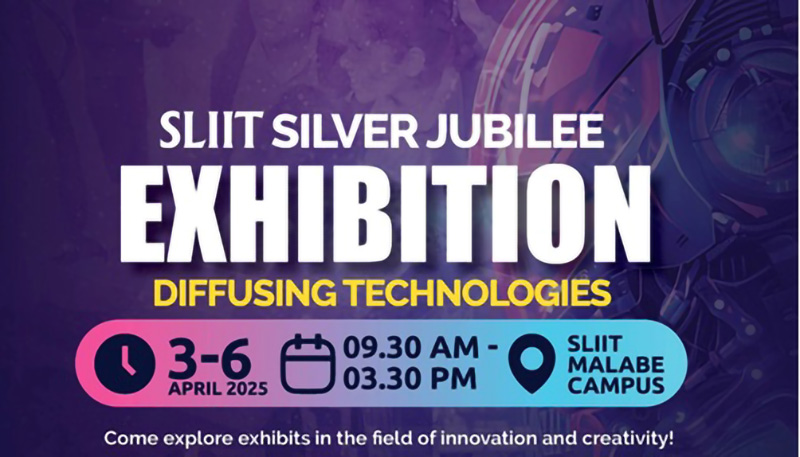
 Founded in 1999, with its main campus in Malabe and multiple centres across the country—including Metro Campus (Colombo), Matara, Kurunegala, Kandy (Pallekele), and Jaffna (Northern Uni)—SLIIT provides state-of-the-art facilities for students, now celebrating 25 years of excellence in 2025.
Founded in 1999, with its main campus in Malabe and multiple centres across the country—including Metro Campus (Colombo), Matara, Kurunegala, Kandy (Pallekele), and Jaffna (Northern Uni)—SLIIT provides state-of-the-art facilities for students, now celebrating 25 years of excellence in 2025.
Kandy Campus
SLIIT is a degree-awarding higher education institute authorised and approved by the University Grants Commission (UGC) and Ministry of Higher Education under the University Act of the Government of Sri Lanka. SLIIT is also the first Sri Lankan institute accredited by the Institution of Engineering & Technology, UK. Further, SLIIT is also a member of the Association of Commonwealth Universities (ACU) and the International Association of Universities (IAU).
Founded in 1999, with its main campus in Malabe and multiple centres across the country—including Metro Campus (Colombo), Matara, Kurunegala, Kandy (Pallekele), and Jaffna (Northern Uni)—SLIIT provides state-of-the-art facilities for students, now celebrating 25 years of excellence in 2025.
Since its inception, SLIIT has played a pivotal role in shaping the technological and educational landscape of Sri Lanka, producing graduates who have excelled in both local and global arenas. This milestone is a testament to the institution’s unwavering commitment to academic excellence, research, and industry collaboration.
Summary of SLIIT’s
History and Status
Sri Lanka Institute of Information Technology (SLIIT) operates as a company limited by guarantee, meaning it has no shareholders and reinvests all surpluses into academic and institutional development.
* Independence from Government: SLIIT was established in 1999 as an independent entity without government ownership or funding, apart from an initial industry promotion grant from the Board of Investment (BOI).
* Mahapola Trust Fund Involvement & Malabe Campus: In 2000, the Mahapola Trust Fund (MTF) agreed to support SLIIT with funding and land for the Malabe Campus. In 2015, SLIIT fully repaid MTF with interest, ending financial ties.
* True Independence (2017-Present): In 2017, SLIIT was officially delisted from any government ministry, reaffirming its status as a self-sustaining, non-state higher education institution.
Today, SLIIT is recognised for academic excellence, global collaborations, and its role in producing IT professionals in Sri Lanka
.A Journey of Growth and Innovation
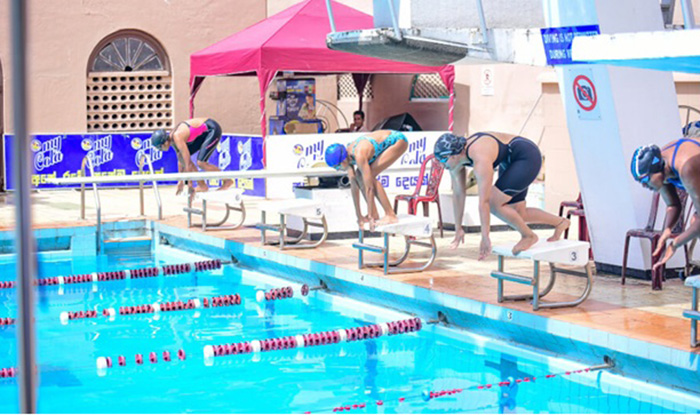
SLIIT began as a pioneering institution dedicated to advancing information technology education in Sri Lanka. Over the past two and a half decades, it has expanded its academic offerings, establishing itself as a multidisciplinary university with programmess in engineering, business, architecture, and humanities, in addition to IT. The growth of SLIIT has been marked by continuous improvement in infrastructure, faculty development, and curriculum enhancement, ensuring that students receive world-class education aligned with industry needs.
Looking Ahead: The Next 25 Years
As SLIIT celebrates its Silver Jubilee, the institution looks forward to the future with a renewed commitment to excellence. With advancements in technology, the rise of artificial intelligence, and the increasing demand for skilled professionals, SLIIT aims to further expand its academic offerings, enhance research capabilities, and continue fostering a culture of innovation. The next 25 years promise to be even more transformative, as the university aspires to make greater contributions to national and global progress.
Sports Achievements:
A Legacy of Excellence
SLIIT has not only excelled in academics but has also built a strong reputation in sports. Over the years, the university has actively promoted athletics and competitive sports by organising inter-university and inter-school competitions, fostering a culture of teamwork, discipline, and resilience. SLIIT teams have secured victories in national and inter-university competitions across various sports, including cricket, basketball, badminton, rugby, football, swimming, and athletics. SLIIT’s sports achievements reflect its dedication to holistic student development, encouraging students to excel beyond the classroom.
Kings of the pool!
Once again, our swimmers have brought glory to SLIIT by emerging as champions at the Asia Pacific Institute of Information and Technology Extravaganza Swimming Championship 2024. They won the Men’s, Women’s, and Overall Championships. Congratulations to all swimmers for their dedication and hard work in the pool, bringing honour to SLIIT.
Winning International Competitions
SLIIT students have participated in and excelled in various international competitions, including Robofest, Codefest, and the University of Queensland – Design Solution for Impact Competition, showcasing their skills and talent on a global stage.
Here’s a more detailed look at SLIIT’s involvement in international competitions:
Robofest:
SLIIT’s Faculty of Engineering organises the annual Robofest competition, which aims to empower students with skills in electronics, robotics, critical thinking, and problem-solving, preparing them to compete internationally and bring recognition to Sri Lankan talent.
Codefest:
CODEFEST is a nationwide Software Competition organized by the Faculty of Computing of Sri Lanka Institute of Information Technology (SLIIT) geared towards exhibiting the software application design and developing talents of students island-wide. It is an effort of SLIIT to elevate the entire nation’s ICT knowledge to achieve its aspiration of being the knowledge hub in Asia. CODEFEST was first organised in 2012 and this year it will be held for the 8th consecutive time in parallel with the 20th anniversary celebrations of SLIIT.
University of Queensland – Design Solution for Impact Competition:
SLIIT hosted the first-ever University of Queensland – Design Solution for Impact Competition in Sri Lanka, with 16 school teams from across the country participating.
International Open Day:
SLIIT organises an International Open Day where students can connect with distinguished lecturers and university representatives from prestigious institutions like the University of Queensland, Liverpool John Moores University, and Manchester Metropolitan University.
Brain Busters:
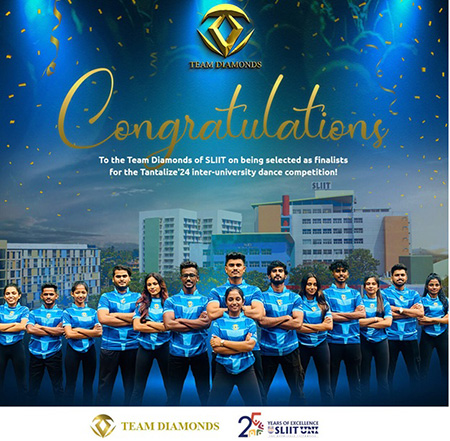
SLIIT Brain Busters is a quiz competition organised by SLIIT. The competition is open to students of National, Private and International Schools Island wide. The programme is broadcast on TV1 television as a series.
Inter-University Dance Competition:
SLIIT Team Diamonds for being selected as finalists and advancing to the Grand Finale of Tantalize 2024, the inter-university dance competition organised by APIIT Sri Lanka. The 14 talented team members from various SLIIT faculties have showcased their skills in Team Diamonds and earned their spot as finalists, competing among over 30 teams from state universities, private universities, and higher education institutes.
Softskills+
For the 11th consecutive year, Softskills+ returns with an exciting lineup of events aimed at honing essential soft skills among students. The program encompasses an interschool quiz contest and a comprehensive workshop focused on developing teamwork, problem-solving abilities, leadership qualities, and fostering creative thinking.
Recently, the Faculty of Business at SLIIT organised its annual Inter-school Quiz Competition and Soft Skills Workshop, marking its fifth successive year. Targeting students in grades 11 to 13 from Commerce streams across State, Private, and International schools, the workshop sought to ignite a passion for soft skills development, emphasising teamwork, problem-solving, creativity, and innovative thinking. Recognising the increasing importance of these soft skills in today’s workforce, the programme aims to fill the gap often left unaddressed in the school curriculum.”
The winners of the soft skill competition with Professor Lakshman Rathnayake: Chairman/Chancellor, Vice Chancellor/MD Professor Lalith Gamage, Professor Nimal Rajapakse: Senior Deputy Vice – Chancellor & Provost, Deputy Vice Chancellor – Research and International Affairs Professor Samantha Thelijjagoda, and Veteran Film Director Somarathna Dissanayake.
VogueFest 2024:
SLIIT Business School organised VogueFest 2024, a platform for emerging fashion designers under 30 to showcase their work and win prizes.
T-shirt Design Competition with Sheffield Hallam University:
SLIIT and Sheffield Hallam University (SHU) UK collaborated on a T-shirt designing competition, with a voting procedure to select the best design.
SLIIT’s Got Talent
: The annual talent show, SLIIT’s Got Talent 2024, was held for the 10th consecutive year at the Nelum Pokuna Mahinda Rajapaksa Theatre on 27th September 2024. SLIIT’s Got Talent had the audience energised with amazing performances, showcasing mind-blowing talent by the orchestra and the talented undergraduates from all faculties.
Other events:
* SLIIT also participates in events like the EDUVision Exhibition organised by the Richmond College Old Boys’ Association.
* They hosted the first-ever University of Queensland – Design Solution for Impact Competition in Sri Lanka.
* SLIIT Business School also organised the Business Proposal Competition.
SLIIT Academy:
SLIIT Academy (Pvt.) Ltd. provides industrial-oriented learning experiences for students.
International Partnerships:
SLIIT has strong international partnerships with universities like Liverpool John Moores University (LJMU), The University of Queensland (UQ), Manchester Metropolitan University (MMU), and Curtin University Australia, providing opportunities for students to study and participate in international events.
(The writer, a senior Chartered Accountant and professional banker, is Professor at SLIIT University, Malabe. He is also the author of the “Doing Social Research and Publishing Results”, a Springer publication (Singapore), and “Samaja Gaveshakaya (in Sinhala).
Features
Inescapable need to deal with the past
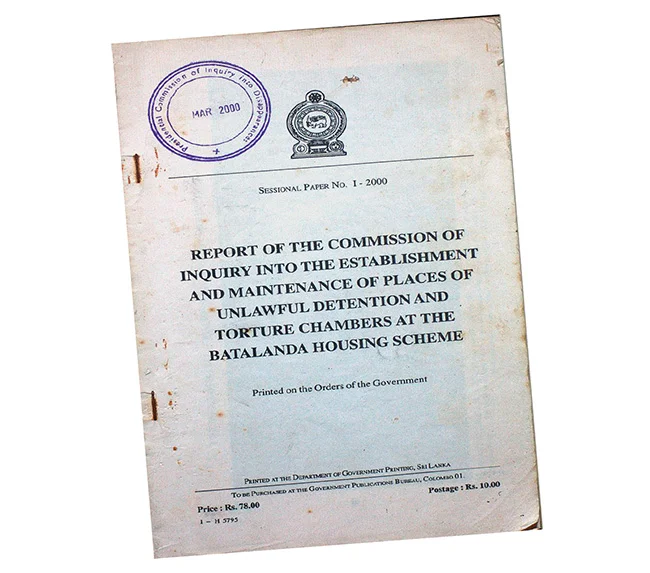
The sudden reemergence of two major incidents from the past, that had become peripheral to the concerns of people today, has jolted the national polity and come to its centre stage. These are the interview by former president Ranil Wickremesinghe with the Al Jazeera television station that elicited the Batalanda issue and now the sanctioning of three former military commanders of the Sri Lankan armed forces and an LTTE commander, who switched sides and joined the government. The key lesson that these two incidents give is that allegations of mass crimes, whether they arise nationally or internationally, have to be dealt with at some time or the other. If they are not, they continue to fester beneath the surface until they rise again in a most unexpected way and when they may be more difficult to deal with.
In the case of the Batalanda interrogation site, the sudden reemergence of issues that seemed buried in the past has given rise to conjecture. The Batalanda issue, which goes back 37 years, was never totally off the radar. But after the last of the commission reports of the JVP period had been published over two decades ago, this matter was no longer at the forefront of public consciousness. Most of those in the younger generations who were too young to know what happened at that time, or born afterwards, would scarcely have any idea of what happened at Batalanda. But once the issue of human rights violations surfaced on Al Jazeera television they have come to occupy centre stage. From the day the former president gave his fateful interview there are commentaries on it both in the mainstream media and on social media.
There seems to be a sustained effort to keep the issue alive. The issues of Batalanda provide good fodder to politicians who are campaigning for election at the forthcoming Local Government elections on May 6. It is notable that the publicity on what transpired at Batalanda provides a way in which the outcome of the forthcoming local government elections in the worst affected parts of the country may be swayed. The problem is that the main contesting political parties are liable to be accused of participation in the JVP insurrection or its suppression or both. This may account for the widening of the scope of the allegations to include other sites such as Matale.
POLITICAL IMPERATIVES
The emergence at this time of the human rights violations and war crimes that took place during the LTTE war have their own political reasons, though these are external. The pursuit of truth and accountability must be universal and free from political motivations. Justice cannot be applied selectively. While human rights violations and war crimes call for universal standards that are applicable to all including those being committed at this time in Gaza and Ukraine, political imperatives influence what is surfaced. The sanctioning of the four military commanders by the UK government has been justified by the UK government minister concerned as being the fulfilment of an election pledge that he had made to his constituents. It is notable that the countries at the forefront of justice for Sri Lanka have large Tamil Diasporas that act as vote banks. It usually takes long time to prosecute human rights violations internationally whether it be in South America or East Timor and diasporas have the staying power and resources to keep going on.
In its response to the sanctions placed on the military commanders, the government’s position is that such unilateral decisions by foreign government are not helpful and complicate the task of national reconciliation. It has faced criticism for its restrained response, with some expecting a more forceful rebuttal against the international community. However, the NPP government is not the first to have had to face such problems. The sanctioning of military commanders and even of former presidents has taken place during the periods of previous governments. One of the former commanders who has been sanctioned by the UK government at this time was also sanctioned by the US government in 2020. This was followed by the Canadian government which sanctioned two former presidents in 2023. Neither of the two governments in power at that time took visibly stronger stands.
In addition, resolutions on Sri Lanka have been a regular occurrence and have been passed over the Sri Lankan government’s opposition since 2012. Apart from the very first vote that took place in 2009 when the government promised to take necessary action to deal with the human rights violations of the past, and won that vote, the government has lost every succeeding vote with the margins of defeat becoming bigger and bigger. This process has now culminated in an evidence gathering unit being set up in Geneva to collect evidence of human rights violations in Sri Lanka that is on offer to international governments to use. This is not a safe situation for Sri Lankan leaders to be in as they can be taken before international courts in foreign countries. It is important for Sri Lanka’s sovereignty and dignity as a country that this trend comes to an end.
COMPREHENSIVE SOLUTION
A peaceful future for Sri Lanka requires a multi-dimensional approach that addresses the root causes of conflict while fostering reconciliation, justice, and inclusive development. So far the government’s response to the international pressures is to indicate that it will strengthen the internal mechanisms already in place like the Office on Missing Persons and in addition to set up a truth and reconciliation commission. The difficulty that the government will face is to obtain a national consensus behind this truth and reconciliation commission. Tamil parties and victims’ groups in particular have voiced scepticism about the value of this mechanism. They have seen commissions come and commissions go. Sinhalese nationalist parties are also highly critical of the need for such commissions. As the Nawaz Commission appointed to identify the recommendations of previous commissions observed, “Our island nation has had a surfeit of commissions. Many witnesses who testified before this commission narrated their disappointment of going before previous commissions and achieving nothing in return.”
Former minister Prof G L Peiris has written a detailed critique of the proposed truth and reconciliation law that the previous government prepared but did not present to parliament.
In his critique, Prof Peiris had drawn from the South African truth and reconciliation commission which is the best known and most thoroughly implemented one in the world. He points out that the South African commission had a mandate to cover the entire country and not only some parts of it like the Sri Lankan law proposes. The need for a Sri Lankan truth and reconciliation commission to cover the entire country and not only the north and east is clear in the reemergence of the Batalanda issue. Serious human rights violations have occurred in all parts of the country, and to those from all ethnic and religious communities, and not only in the north and east.
Dealing with the past can only be successful in the context of a “system change” in which there is mutual agreement about the future. The longer this is delayed, the more scepticism will grow among victims and the broader public about the government’s commitment to a solution. The important feature of the South African commission was that it was part of a larger political process aimed to build national consensus through a long and strenuous process of consultations. The ultimate goal of the South African reconciliation process was a comprehensive political settlement that included power-sharing between racial groups and accountability measures that facilitated healing for all sides. If Sri Lanka is to achieve genuine reconciliation, it is necessary to learn from these experiences and take decisive steps to address past injustices in a manner that fosters lasting national unity. A peaceful Sri Lanka is possible if the government, opposition and people commit to truth, justice and inclusivity.
by Jehan Perera
-

 Sports4 days ago
Sports4 days agoSri Lanka’s eternal search for the elusive all-rounder
-

 News3 days ago
News3 days agoBid to include genocide allegation against Sri Lanka in Canada’s school curriculum thwarted
-
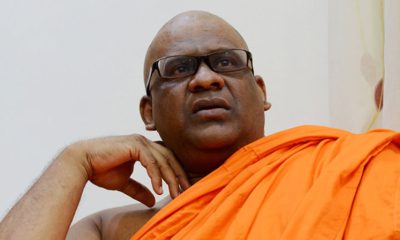
 News5 days ago
News5 days agoGnanasara Thera urged to reveal masterminds behind Easter Sunday terror attacks
-
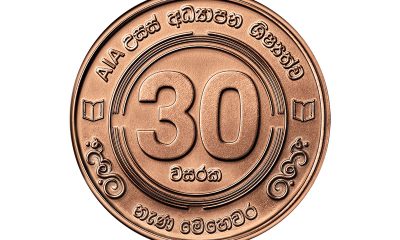
 Business6 days ago
Business6 days agoAIA Higher Education Scholarships Programme celebrating 30-year journey
-
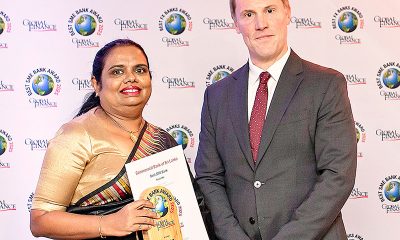
 News4 days ago
News4 days agoComBank crowned Global Finance Best SME Bank in Sri Lanka for 3rd successive year
-
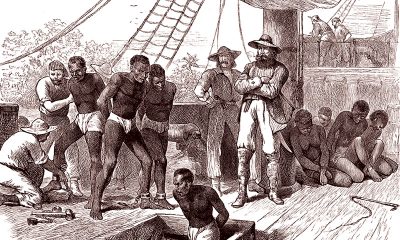
 Features4 days ago
Features4 days agoSanctions by The Unpunished
-

 Latest News2 days ago
Latest News2 days agoIPL 2025: Rookies Ashwani and Rickelton lead Mumbai Indians to first win
-
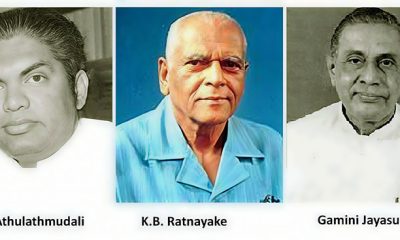
 Features4 days ago
Features4 days agoMore parliamentary giants I was privileged to know

